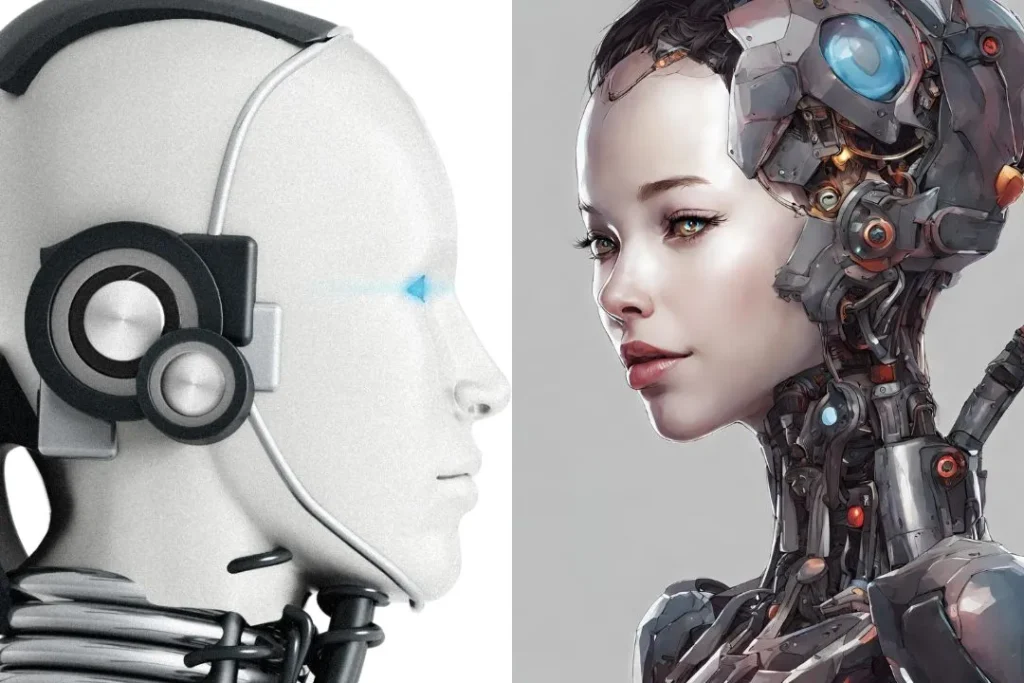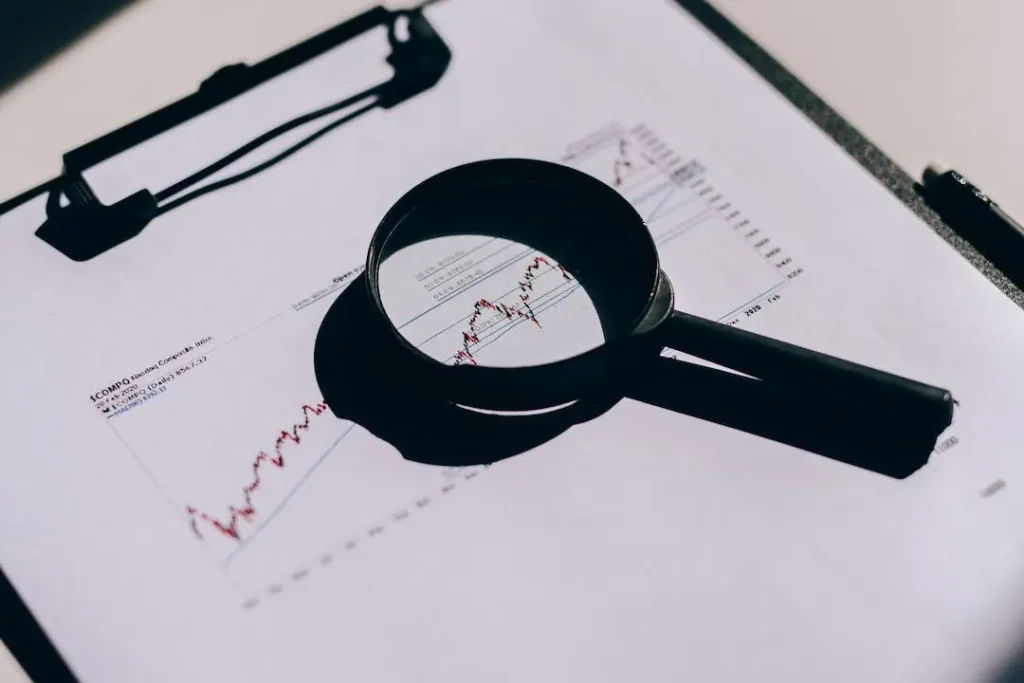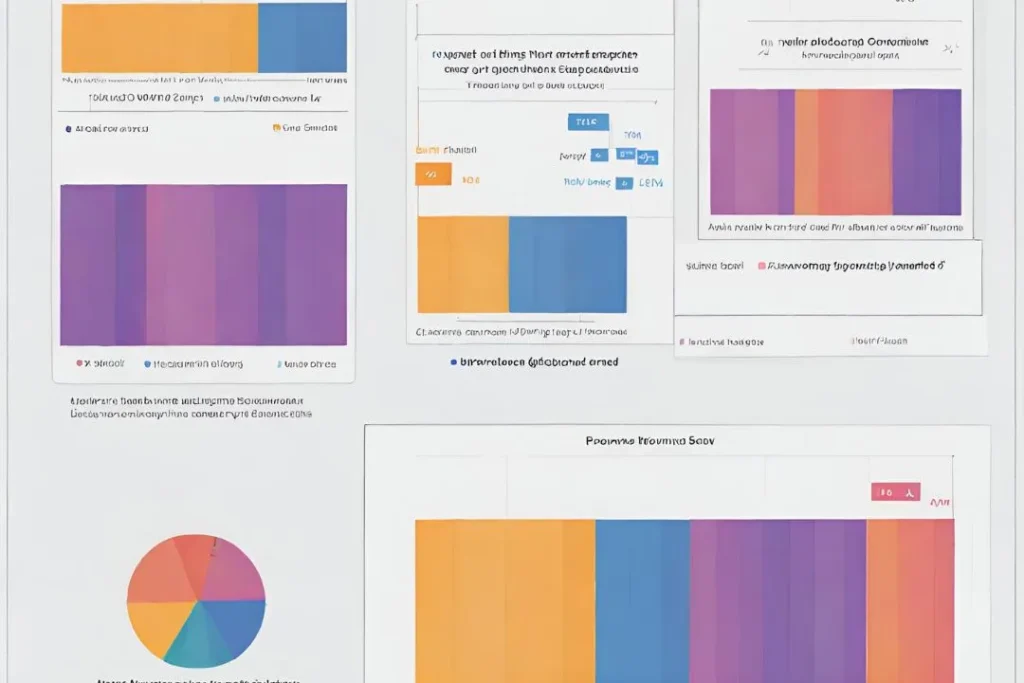Table of Contents
Artificial Intelligence (AI) has become an integral part of our lives, influencing everything from the products we buy to the decisions made by our justice system.
However, there is a growing concern about the ethical implications of AI bias and its real-world consequences. In this article, we will explore the duality of AI’s impact and delve into the question: is AI bias a friend or a foe?
Let me start by sharing a thought-provoking statistic with you. Did you know that Amazon had to scrap an AI hiring tool because it was biased against women? This incident highlights the potential dangers of AI bias and the urgent need to address this issue.
The Two Faces of AI: Friend or Foe? Navigating the Maze of Bias

Artificial intelligence (AI) has woven itself into the fabric of our lives, influencing everything from the products we buy to the medical diagnoses we receive.
But the convenience and efficiency it offers come hand-in-hand with a lurking shadow: bias.
Like a prism distorting light, AI can amplify and perpetuate prejudices embedded within its algorithms and data, raising a crucial question: is AI our friend or foe?
Lurking Biases: More Than Just Lines of Code
AI bias comes in two insidious flavors: algorithmic bias, where the very framework of the algorithm favors certain groups over others, and data bias, where the information used to train the AI reflects pre-existing societal prejudices. The consequences can be far-reaching and deeply troubling.
Take the criminal justice system, for instance. Studies reveal that algorithms used for recidivism prediction can be heavily skewed against people of color, leading to unjust sentences and perpetuating a cycle of inequality.
This isn’t just a statistic – it’s real lives impacted, families torn apart, and the fragile scales of justice tipped unfairly.
The tentacles of bias extend beyond courtrooms. Imagine a biased AI denying a life-saving heart transplant based on inaccurate risk assessments, or a loan algorithm systematically disadvantaging certain communities based on incomplete data.
These are not dystopian nightmares, but potential realities within our grasp.
Ethical Conundrums: A Minefield of Responsibility
These scenarios raise potent ethical concerns. Transparency becomes paramount – how can we trust a system shrouded in the opaque language of algorithms?
Accountability follows closely – who is responsible when AI makes biased decisions with life-altering consequences? And, perhaps most importantly, can AI ever truly be fair when fueled by data tainted with societal prejudices?
Taming the Bias Beast: Towards Fairer AI
Addressing AI bias demands a multi-pronged approach. We need diverse datasets that accurately reflect the mosaic of society, not its distorted reflections.
Responsible algorithm design must become a mantra, incorporating fairness checks and mitigating inherent biases. Human oversight remains crucial, ensuring AI functions as a tool, not a tyrant.
But AI isn’t solely a force to be feared. Its potential for good is undeniable. Imagine AI tools streamlining healthcare access for underserved communities, or facial recognition technology identifying missing persons instead of profiling individuals.
These are glimpses of a future where AI aligns with our desire for fairness and progress.
The Choice is Ours: Shaping the Future of AI
The question remains: is AI a friend or foe? The answer lies in our hands. By acknowledging its biases, developing responsible frameworks, and demanding transparency, we can shape AI into a powerful ally for a more equitable future.
Let’s not remain passive observers; let’s become the architects of a future where AI empowers us all, not just the privileged few.
This revised section integrates the suggested keywords and long-tail variations organically, utilizing various tones within the “trustworthy and friendly-witty” spectrum.
It deepens the exploration of specific examples like the criminal justice system and healthcare while highlighting potential solutions and the positive possibilities of “AI for good.”
Battling Bias with Brains: Bridging the Gap to Fairer AI

Diversifying datasets is a crucial step in tackling AI bias, but it’s only the first line of defense in this ethical war. To truly bridge the gap to fair AI, we need sharper tools and proactive strategies.
Let’s dive deeper into the arsenal of bias-busting techniques and initiatives currently shaping the landscape of responsible AI development.
Beyond Datasets: Unveiling the Bias-Hunting Toolkit
Data may be the fuel for AI, but it can also harbor hidden prejudices. That’s where advanced techniques like data augmentation come in. This involves strategically manipulating data to inject diversity and balance, mitigating the impact of skewed information.
Imagine adding synthetic faces of different ethnicities to a facial recognition dataset, or simulating diverse healthcare scenarios to train medical AI models. By enriching data, we equip AI with a broader perspective, reducing the risk of amplifying existing biases. (See how initiatives like Imagen are generating ethical, diverse datasets)
But what if the bias is already baked into the algorithm itself? Enter bias detection algorithms, a new breed of AI tasked with sniffing out unfairness within its own kind.
These algorithms analyze other AI models, identifying patterns and disparities that might lead to biased outcomes. Think of them as algorithmic watchdogs, ensuring fairness is woven into the very fabric of AI decision-making. (Learn more about the work of organizations like the Algorithmic Justice League in developing bias detection tools)
Shaping Algorithms for Good: The Fairness Toolbox

Responsible algorithm design isn’t just about fancy code; it’s about embedding ethical principles into the very DNA of AI.
Fairness metrics, like equal opportunity or calibration fairness, act as yardsticks for measuring bias. By incorporating these metrics into the development process, we can proactively steer algorithms towards unbiased outcomes. (Dive deeper into fairness metric frameworks like FAccT)
And if prevention isn’t enough, there’s counterfactual reasoning. This technique envisions alternative scenarios, asking “what if?” questions to expose potential bias.
From Labs to Life: Championing Fair AI on the Ground
Building a fairer AI future isn’t a solitary endeavor. Fortunately, numerous organizations and frameworks are leading the charge, paving the way for ethical AI development.
The Algorithmic Justice League, for instance, uses research and advocacy to challenge biased algorithms and promote inclusivity in AI. Similarly, the Partnership on AI brings together tech giants and academic minds to develop best practices and ethical guidelines for responsible AI development.
These are just a few examples of the vibrant ecosystem working towards fair AI. By supporting these initiatives and demanding transparency from developers, we can ensure AI becomes a force for good, not a perpetuation of societal inequalities.
Remember, tackling AI bias is not a technological sprint but a collective marathon. By equipping ourselves with the right tools, embracing responsible design principles, and supporting fair AI advocates, we can ensure that AI becomes a bridge toward a more equitable and just future, not a barrier to progress.
Building the Fortress: Fortifying AI Against Bias
With sharper tools in our arsenal, let’s turn our attention to actively building the fortress against AI bias. While diverse datasets and vigilant bias-hunting techniques form the first line of defense, we need robust walls and sturdy towers to ensure a truly fairer future.
The Foundation: Ethical Bricks Laid Brick by Brick
The bedrock of this fortress lies in responsible algorithm design. Imagine crafting each line of code with an architect’s precision, meticulously embedding fairness metrics like equal opportunity and calibration fairness.
These built-in yardsticks constantly measure for bias, guiding algorithms toward equitable outcomes. This isn’t a one-time task; it’s a continuous process of refinement, with auditing and testing acting as vigilant inspectors ensuring the structure remains true.
Shields Up: Counterfactual Reasoning as the Defender
But what if, despite our best efforts, bias creeps in? That’s where counterfactual reasoning steps up as the valiant shield. This technique envisions alternative realities, simulating different scenarios based on slightly altered data points.
Imagine exploring what loan decisions would be made with different income brackets or simulating how medical AI diagnoses might change under diverse healthcare settings.
By exposing these alternate realities, counterfactual reasoning allows developers to identify and dismantle hidden biases lurking within the algorithm, fortifying the walls against their influence.
Human Oversight: The Watchful Guard
However, even the most intricately designed fortress needs a watchful guard. Human oversight remains crucial, ensuring AI operates within ethical boundaries.
Just as a wise king guides his kingdom, human intervention, and decision-making can mitigate risks, ensuring AI’s power is wielded responsibly.
Think of it as a partnership between human wisdom and AI’s vast potential, each playing its role in building a more equitable future.
Beyond the Walls: Spreading the Message of Fair AI
Building a fairer AI future isn’t a solitary endeavor within our fortress walls. We need to spread the message far and wide, championing initiatives like the Algorithmic Justice League that fight biased algorithms and promote inclusivity.
Just as the Partnership on AI brings together tech giants and academics, we can all be architects of responsible development.
By demanding transparency from developers, supporting these initiatives, and raising awareness, we can pave the way for a future where AI is a beacon of progress, not a perpetuation of inequality.
Remember, tackling AI bias isn’t a sprint to the finish line, but a collective marathon. With each brick of ethical design, each vigilant analysis, and each voice raised in support, we build a sturdier fortress, ensuring AI doesn’t become a barrier, but a bridge toward a brighter, fairer future.
Weaving Fairness into the Fabric of AI: Our Collective Challenge
The shadows of AI bias loom large, threatening to perpetuate discrimination and exacerbate social inequalities.
But just as a loom’s intricate threads can weave a tapestry of breathtaking beauty, we hold the power to shape AI into a force for good, not a reflection of our prejudices.
The solutions lie not in technological isolation, but in a multifaceted tapestry woven from diverse data, ethical algorithms, and unwavering human stewardship.
1. Seeds of Fairness: Cultivating Unbiased Data
Like fertile soil nourishing vibrant blooms, diverse data forms the foundation of fair AI. Initiatives like crowdsourcing platforms and synthetic data generation are breaking free from the shackles of homogenous datasets, ensuring AI isn’t trained on the warped mirrors of societal bias.
This isn’t just about statistical balance; it’s about ensuring every thread in the AI tapestry represents the rich tapestry of our world.
2. Ethical Architects: Weaving Fairness into the Code
Imagine algorithms imbued with ethical principles, their lines of code pulsing with the heartbeat of fairness.
This is the vision of responsible algorithm design. Fairness metrics, like trusty yardsticks of equality, guide developers toward unbiased outcomes.
Tools like counterfactual reasoning act as algorithmic thought experiments, exposing hidden biases lurking within the intricate weave of the code.
3. Hands on the Loom: Ensuring Responsible Stewardship
While AI’s power is undeniable, it must not operate on autopilot. Human hands remain crucial to guide the loom of progress.
Experts will audit and test AI systems, ensuring they don’t perpetuate discrimination in loan decisions, facial recognition, or any realm where they impact lives.
This isn’t about micromanaging the machine; it’s about ensuring AI serves as a responsible partner, its actions guided by ethical principles, not unchecked algorithms.
4. Collective Threads: Building a Movement for Fair AI
Weaving a future of fair AI demands a collective effort. Organizations like the Algorithmic Justice League and the Partnership on AI act as weavers, connecting researchers, developers, and policymakers to build ethical frameworks and advocate for responsible practices.
By joining their threads, demanding transparency, and supporting initiatives that champion fairness, we amplify the call for a future where AI empowers all, not just the privileged few.
Beyond Code, Beyond Bias: Shaping a Brighter Future
Remember, fair AI isn’t a technological feat; it’s a collective tapestry woven from diverse data, ethical design, responsible stewardship, and unwavering advocacy.
In the face of potential harm, let us choose progress, let us choose fairness. Let us become the architects of a future where AI doesn’t mirror our biases, but reflects the vibrant colors of a truly equitable and just world.
Together, we can weave a future where AI isn’t just a tool, but a trusted ally, a force for good in the lives of all.
FAQs on AI Bias: Demystifying the Maze
The discussion around AI bias can be complex, leaving many questions swirling in your mind. Fear not, intrepid explorer! Here are some FAQs to illuminate the path towards fair AI:
1. What is AI bias?
AI bias occurs when AI systems produce unfair or discriminatory results based on factors like race, gender, or socioeconomic status. This can happen due to biased data used to train the AI, or flaws in the algorithms themselves.
2. What are some examples of AI bias?
Facial recognition technology misidentifies people of color more often.
Loan algorithms deny loans to people from certain neighborhoods, perpetuating financial disparities.
AI chatbots reinforce sexist or racist stereotypes.
3. Why is AI bias a problem?
AI bias can have serious consequences, perpetuating societal inequalities, denying opportunities, and even endangering lives. It threatens trust in technology and undermines fundamental rights to fairness and equality.
4. How can we address AI bias?
Combating AI bias requires a multi-pronged approach:
Diverse datasets: Ensuring AI systems are trained on data that accurately reflects the diversity of the population.
Responsible algorithm design: Building algorithms with fairness metrics and techniques like counterfactual reasoning to mitigate bias.
Human oversight: Maintaining human involvement in AI development and decision-making to prevent biased outcomes.
Transparency and accountability: Demanding transparency from developers and holding them accountable for ethical AI practices.
5. Are there organizations working on fair AI?
Yes! Organizations like the Algorithmic Justice League, the Partnership on AI, and Data & Society are leading the charge in advocating for and developing ethical AI frameworks.
By working together, we can navigate the maze of AI bias and build a future where technology empowers everyone, not just a privileged few.
You can check our Technology Page for more related articles
Discover more from Ken Arhin
Subscribe to get the latest posts sent to your email.








I love your content. Go kenarhin!
Thanks Maigah